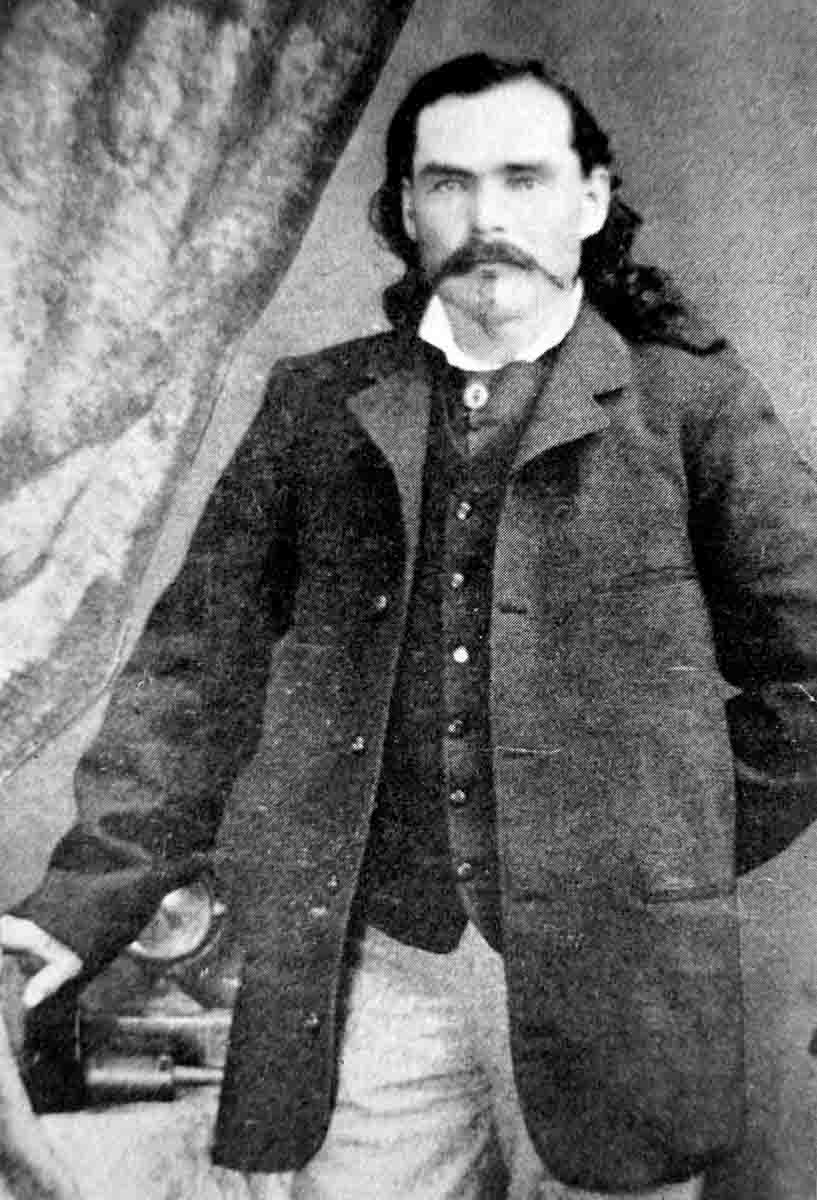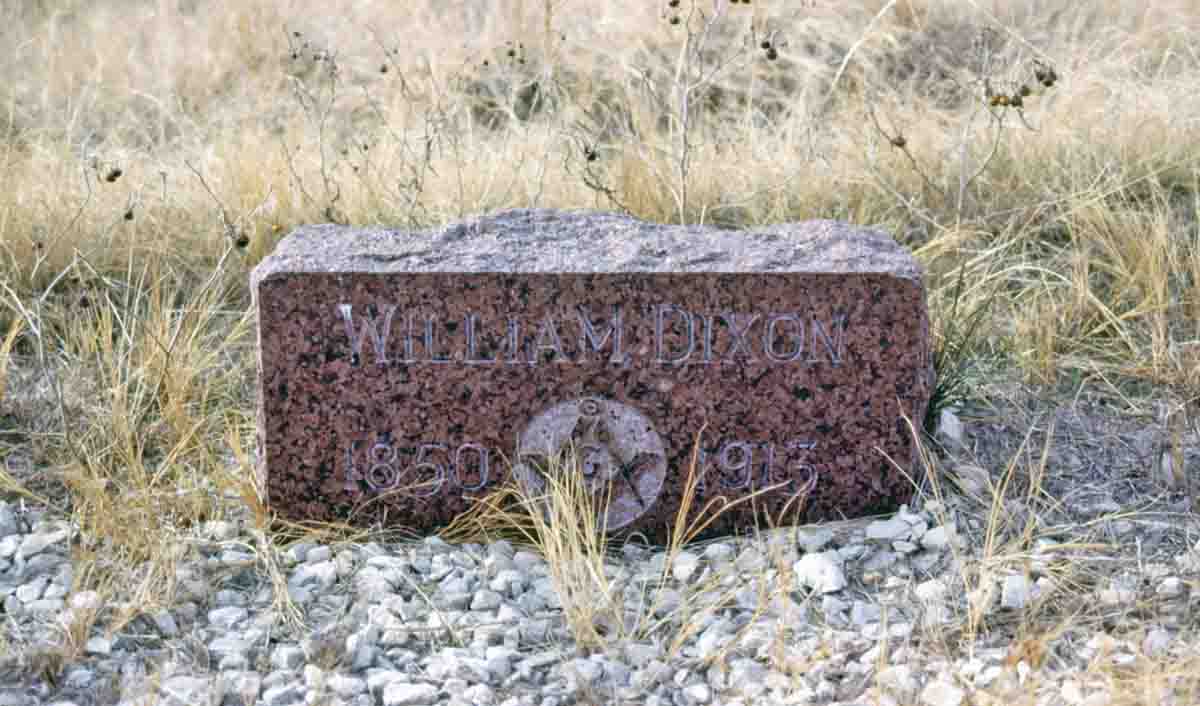Indian Depredation Case Files The Sworn Depositions Part XII
The Deposition of William "Billy" Dixon - For the Defendants
feature By: Leo Remiger | October, 18
Rath and Company (represented by Charles Rath,
Robert M. Wright and James Langton), Myers and
Leonard, and the Cator Brothers filed suit in the U.S.
Court of Claims for the recovery of losses they suffered
during and after the battle of Adobe Walls.
Rath and Company (represented by Charles Rath, Robert M. Wright, and James Langton), Myers and Leonard, and the Cator Brothers filed suit in the U.S. Court of Claims for the recovery of losses they suffered during and after the battle of Adobe Walls. Their sworn depositions contain interesting information regarding the actual battle of Adobe Walls and the immediate events afterward. Other individuals that provided sworn depositions either in support of or contradicting previous testimony concerning the events at Adobe Walls were Andrew Johnson, W.B. “Bat” Masterson and William “Billy” Dixon.
The men were questioned individually or gave formal depositions at various locations and dates. This is the final deposition article of this series. The information provided about the circumstances surrounding the battle of Adobe Walls, the differences in memory and styles of testimony, along with the general history of the great buffalo hunt certainly make them interesting reading and worth repeating here.
William “Billy” Dixon has assumed almost mythical status as the yardstick by which all buffalo hunters are measured. We conclude this series with Dixon’s deposition.
UNITED STATES OF AMERICA CHAS. RATH & Co., Complainants
State of Kansas SS = V =
Sedgwick Co. The United States & the Cheyenne,
Kiowa & Comanche Indians
Department of Justice
Washington, D.C.
Granbury, Texas, July 4, 1898
William T.S. Curtis, Esq.,
Washington, D.C.
Sir:
You will take notice that, on the 25th day of July, 1898, at Pan Handle, Texas, I shall proceed to take the deposition of William Dixon, the same to be read as evidence on behalf of the government in the following cases:
James H. and Arthur J.L. Cator, No. 4,601;
Charles Rath & Company, No. 4,593:
Frederick J. Leonard and A.C. Meyers, trading as Meyers & Leonard, No. 10,102.
The above numbered cases being now pending in the Court of Claims at Washington, D.C. Said deposition to be taken before the Clerk of the County Court of Carson county, Texas.
E.H. Fitch
Special U.S. Attorney
In the Court of Claims
Frederick J. Leonard
and A.C. Myers trading
as Myers & Leonard
vs. Indian Dep. No. 10102
The United States
Kiowa, Comanche & Cheyenne
Indians
The deposition of William Dixon taken before me, M.K. Callisan Clerk of the Court of Carson County, Tex, at Panhandle Tex this July 25th 1898 in pursuance of the notice hereto attached, the said deposition to be read as evidence on behalf of the defendants in the following Indian Depredation claims James H. Cator & Arthur J.L. Cator vs. United States & Kiowa, Comanche, & Cheyenne Indians Claim Number 4601, and Charles Rath & Company vs. The United States and Kiowa, Comanche & Cheyenne Indians, claim Number 4593 in pursuance of the annexed notice.

The witness being of lawful age and first duly sworn deposes and says.
Present E.H. Fitch Counsel for defendants the claimants not being represented.
M.K. Callisan,
Co. Clerk
William Dixon
Q. State your name, age, residence and occupation.
A. Wm. Dixon, age 46, reside at Adobe Walls, Texas, occupation farmer, stockman and Post Master.
Q. Where did you live in June & July 1874 and what business were you engaged in?
A. My headquarters were at Adobe Walls and I was engaged in buffalo hunting.
Q. Were you at that time acquainted with Frederick Leonard & A.C. Myers, Jas H. and Arthur J.L. Cator and the firm of Charles Rath & Company, if so what business were they in and at what place?
A. I knew them well. They were merchandising and had a trading post at Adobe Walls, Tex.
Q. Were you present at Adobe Walls in June 1874 at any time when the Indians came there?
A. Yes Sir.
Q. What was the date of their coming?
A. It was the morning of the 27th of June 1874.
Q. Tell what occurred.
A. Just about daylight of that morning the Indians came in. I slept that night on the ground, close to my wagon just outside of the stockade. I was awake at the time, on account of a roof beam giving away in the restaurant of Jim Hanrahan. We fixed the beam and most of the men went back to bed but I stayed up and returned to my wagon. One of Hanrahan’s men had gone after the horses some two or three hundred yards, presently he came running back and I heard the Indians yell and they came rushing up with our horses in front of them. I grabbed my gun and fired one shot. I retreated into Hanrahan’s store or restaurant, after I got in we were busy for some time in barricading doors and windows, all of the buildings were in a group. The Indians came rushing up and commenced shooting as soon as they made their charge, I judged there were 400 to 450 Indians in the crowd. All of the men inside of the buildings commenced shooting at the Indians, the fight, that is the main fight, lasted about one hour, then the Indians retreated and stayed there some distance away and kept up their occasional shooting until about 4 o’clock in the evening, they then disappeared and were gone by sundown. I saw the Indians try to break down the door of Rath & Company but they did not succeed nor did they succeed in getting in any of the buildings nor stores. We found the bodies of 12 Indians on the ground after the fight. The Indians were repulsed and driven away.
Q. Did these Indians steal, carry or take away any of the property of these claimants?
A. No. Sir: They went away empty handed except some few horses and some killed.
Q. Did you or not, after the fight, and after the Indians had gone, see the property that these claimants had prior to the coming of the Indians?
A. I did and it was all safe and as it was before they came, none of it was taken.
Q. Had you or not been to Adobe Walls and at the places of business of these claimants prior to this fight?
A. Yes Sir.
Q. You knew this stock of merchandise and other belongings, did you?
A. Yes Sir.
Q. How long after this fight did these claimants remain at Adobe Walls?
A. They stayed there some few weeks.
Q. Where did they go?
A. To Dodge City, Kansas.
Q. What became of claimants merchandise, buffalo hides and other belongings then at Adobe Walls at the time claimants left?
A. They took it with them but left the buildings standing.
Q. What became of the buildings?
A. They were burned by the Comanche Indians in October 1874.

Q. What kind of a trading post did these claimants have?
A. They were buying & trading in buffalo hides.
Q. Were you ever in the employ of the Government?
A. Yes, was Government Scout for about 9 years under General Miles.
Q. At the time of this fight and after, were the buffalo plentiful or not in the Adobe Walls Country?
A. No. They had become scarce.
Q. What Indians were these?
A. Kiowas, Comanches, and Cheyenne Indians.
Q. Can you state whether or not these Indians in June 1874 destroyed, stole or carried away the property that claimants allege in their petitions was destroyed and stolen?
A. I see the list of property that claimants allege in their petition to have been destroyed or stolen by the Indians. I was present during all of that fight and know that it is not true that they destroyed or stole the property or any of it that claimants allege; but the Indians were repulsed and driven away. I also know that at the time the claimants left Adobe Walls for Dodge City that they were not being molested by the Indians nor were they forced to leave except the traffic in buffalo hides had fallen off by reason of the scarcity of buffalo in that section.
Q. Do you know anything else material to this claim?
A. No.
Q. Are you related to the claimants or have you any interest [in] these claims?
A. No Sir.
M.K. Callisan
Co. Clerk
William Dixon
State of Texas
County of Carson SS
I M.K. Callisan, Clerk of the County Court of Carson County Texas do certify that the foregoing deposition of William Dixon was taken before me at Panhandle, Texas; that the witness was duly sworn before testifying, that his answers were written down in my presence.
That he subscribed to the same in my presence.
Witness my hand and official seal this July 25th, 1898.
M.K. Callisan
Clerk County Court
Carson County, Texas
One can only imagine what a surprise this deposition must have been to the claimants!1
I have never been able to determine if any of the claimants were actually paid for the damages claimed in this case, then I read the following:
Masterson shed no tears over Quanah Parker’s passing. Although he respected the chief’s record as a warrior and a leader of his people, he still saw him as a brutal enemy who had killed Bat’s friends and destroyed their property. Only three months before receiving Tilghman’s letter he had expressed outrage that Congress had appropriated $1,000 for a monument to Cynthia Ann Parker, Quanah’s mother, and predicted that when the chief died additional government funds would be spent to honor him. Back in 1892 [1893] he had given a sworn deposition in support of friends who had suffered financial losses at Adobe Walls, and now, thirty-six years after that battle, the federal government still had not provided compensation for those losses. Instead, he said, Congress was voting funds for “a monument to the mother of the Indian chief who destroyed and plundered the white pioneers of the west.” He found that deplorable.2
REFERENCES:
1. U.S. Court of Claims, Indian Depredation Case Files. Case 4593, Charles Rath and Company Claimants. Record Group 123, National Archives and Records Service, Washington, D.C.
Baker, T. Lindsay, “ADOBE WALLS, THE HISTORY AND ARCHEOLOGY OF THE 1874 TRADING POST,” Texas: Texas A&M University Press, College Station, 1986: 18, 20-22, 54-55, 61, 70, 81-82, 93, 99, 101, 104-105, 132.
2. DeArment, Robert K., Gunfighter in Gotham: Bat Masterson’s New York City Years, University of Oklahoma, Norman, Oklahoma, 2013, Note 5: WBM Column, NYMT. December 4, 1910


